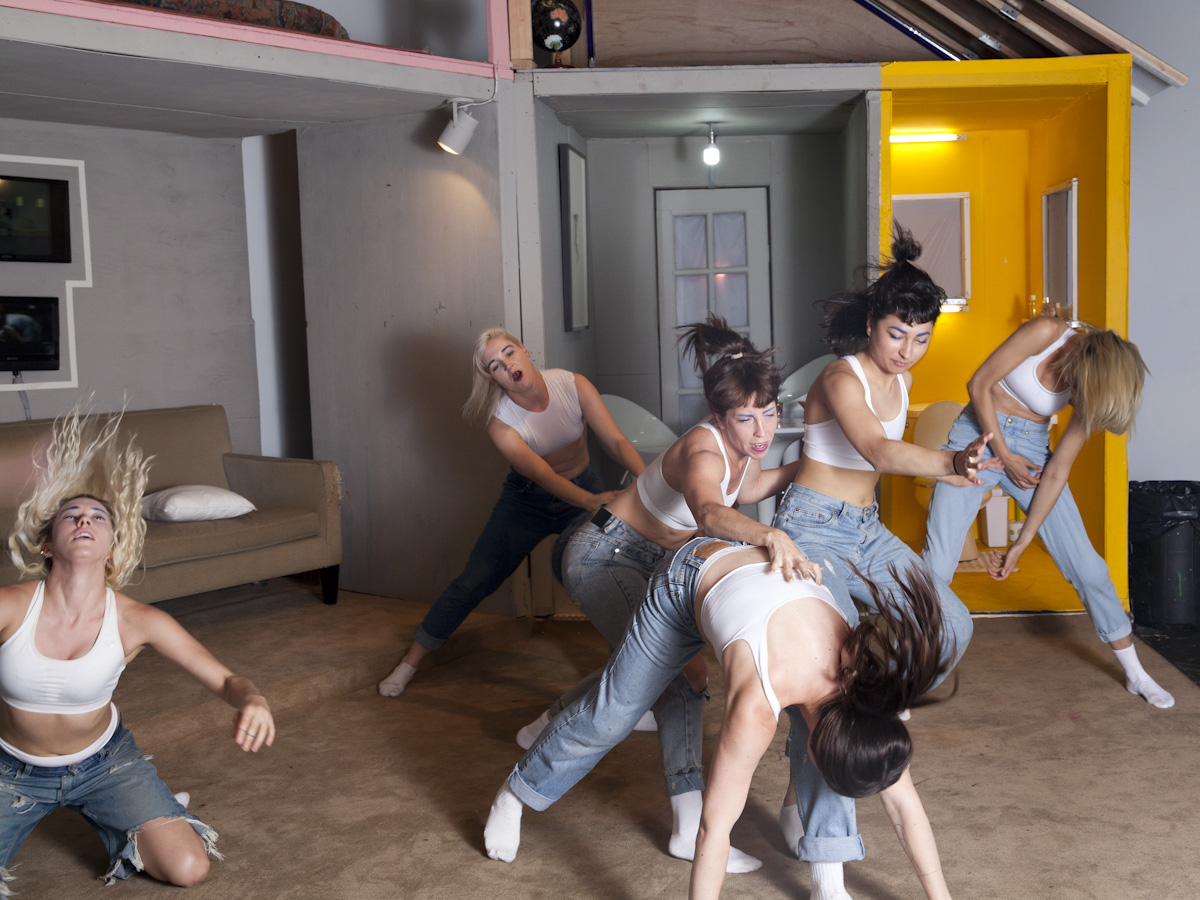FlucT Model Home
Watching a FlucT performance, there’s always a sense anything could happen next. In this spring’s Model Home performance, the quick jolts from organic writhing to staccato glitching, from dogpiles of bodies to pantomimed birthing sequences with Lamaze breathing techniques, were driven less by a conventional narrative logic and more by the schizophrenic audio tracks which the collective’s founders Monica Mirabile and Sigrid Lauren design, and which are as much a part of their performances as the movements they choreograph. The track this time around flashed from samples of Taylor Swift to Dan Deacon, from the ice-cream truck song to random YouTube clips to System of a Down. These kinds of audio mash-ups and the movement vocabulary of looping and glitching that FlucT’s known for can be easily identified as an ode to our post-internet reality. But watching Model Home, for the first time I realized how much these erratic switch-ups allow their performances an almost lavish degree of possibility. In them, there’s a raw potential for change.
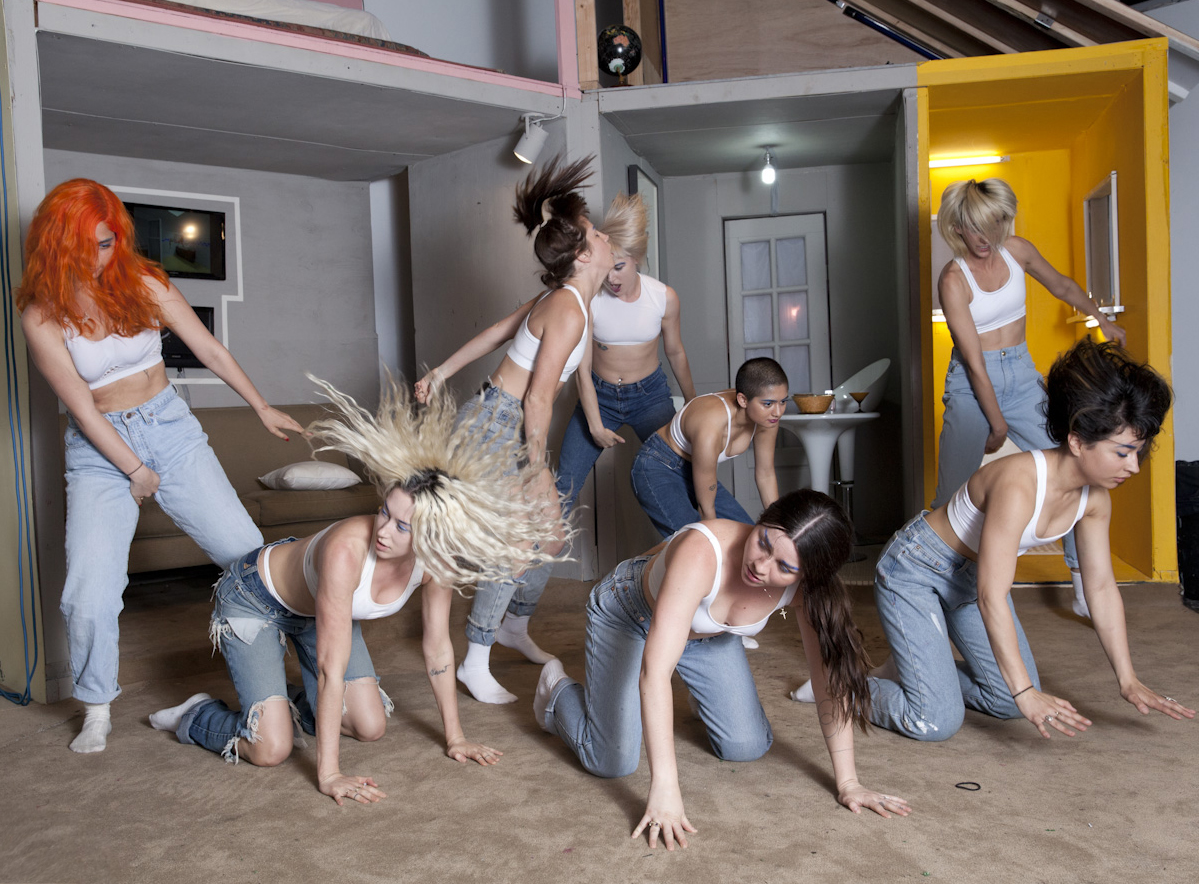
In April, Mirabile, who directed the month-long multi-performer collaboration, built a life-sized dollhouse in Bushwick’s not-for-profit performance space Secret Project Robot. For the residency titled Model Home, together Mirabile and Lauren choreographed a thirteen-woman dance piece and curated a month of performances inviting other artists like Signe Pierce, Raul de Nieves, and India Salvor Menuez to interact with the installation. The dollhouse set included a cross-section of a home complete with bathroom, kitchen, living room, bedroom, and attic, as well as a backyard playground with an astroturf lawn, swingset, and stripper pole.
To start the piece, one by one the thirteen women in FlucT’s Model Home performance enter through the kitchen’s backdoor and pile on top of each other, a tangle of limbs. They’re decked out in variations on a theme, light denim jeans and white sports bras. The choreography splits them up in different rooms—fully utilizing the set from the attic to the backyard—only to have them re-unite in the living room at its end.
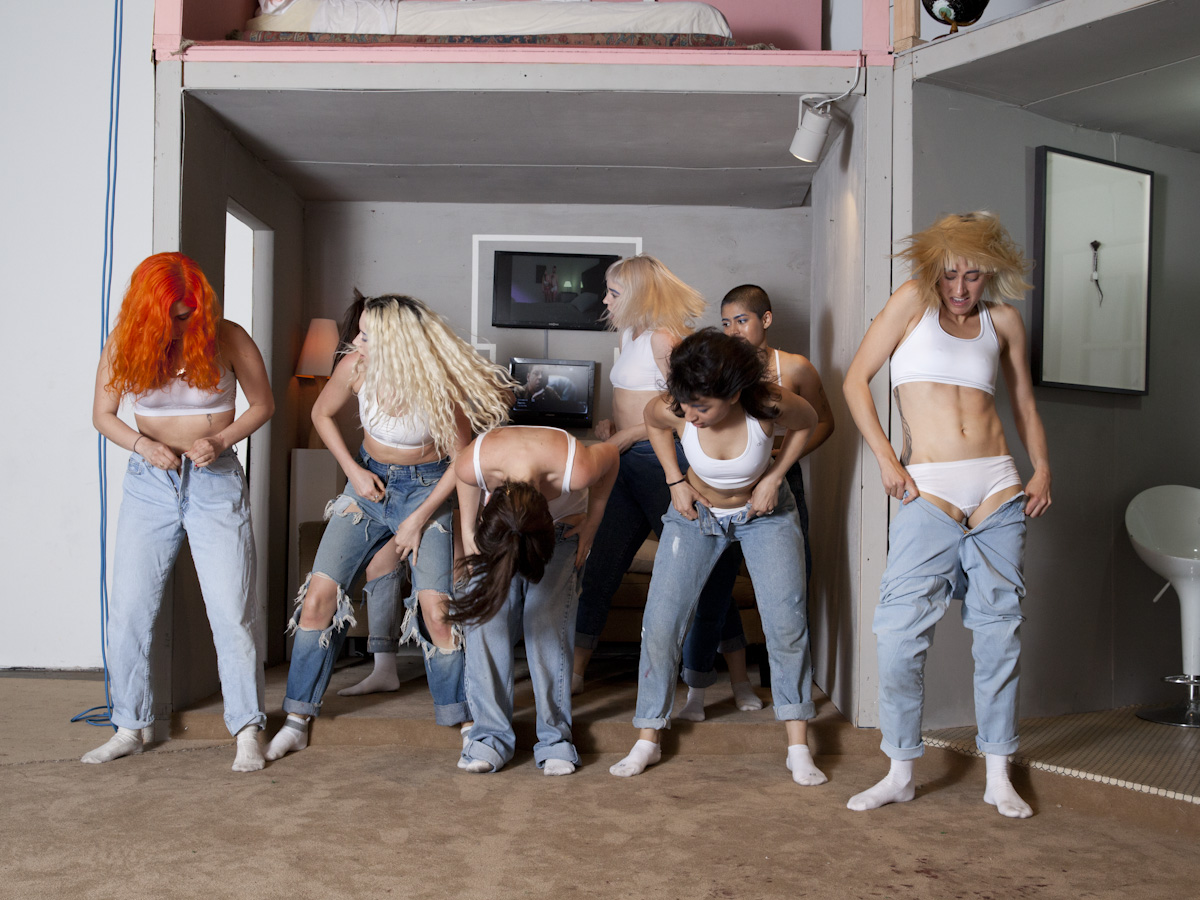
A cross-section view of anything usually grants it a strange anatomical poetics. But maybe because dollhouses are so common—I had a mass-produced Fisher Price one made of pale pink plastic growing up—we don’t bat an eye at the surgically-sliced sampling of the nuclear family’s ideal dwelling. Even when Mirabelle and Lauren blew the dollhouse up into something life-sized, it wasn’t anything strange. Their model home instead glowed with all the familiar promises of an IKEA showroom. Still, there were traces of a tight budget that complemented the commentary on capitalism and consumerism embedded in an installation named for display models used to hock subdivisions of identical homes.
Mirabile and Lauren founded FlucT about three years ago in Baltimore, where they had met while inhabiting the same warehouse spaces and getting involved with the Baltimore Experimental Dance Collective. They moved to New York in November 2012, and since, they’ve been prolific in performing, collaborating with a lot of musicians in the noisy electronic scene like Pictureplane and MNDR, and carving out a space for dance at basement shows in now-defunct venues like Fitness and at art-world venues like the Queens Museum.
Over the course of all of it, they’ve developed a distinct vocabulary of movement that spans futuristic glitching and looping as well as a theatrical immersion of gestures both sexy and gross. They’ve probably absorbed more from popping and locking culture than from Martha Graham, but of all the twentieth-century modern dance pioneers, they probably owe the most to Doris Humphrey, who postulated that dance was all about the relationship between gravity and the human body. In Model Home, the women thrash and bash, they lift each other up and they throw their own bodies to the ground. At one point, Mirabile projects herself from the second-floor bedroom, suspended by a harness and pulley system weighted down by three of the other dancers at the other end of the rope. At many moments, the women very literally support each other, one another’s bodies the only thing between them and the force of gravity pulling them toward the earth.
There’s a feminist revisionist impulse in having only women in a performance set in a dollhouse which is almost synonymous with a cookie-cutter heteronormative nuclear family. But the vibe is not quite utopian. A familiar intertwining of violence and intimacy carpets the performance, which includes choreographed strangulation and bloody noses via fake-blood capsules. Though the sense of violence is somewhat subverted by the extreme performativity, it doesn’t feel totally artificial either. The choreography explores a sincere engagement with aggressive impulses. It’s significant, however, that the ending sequence is the piece’s most vulnerable. The women strip down and there’s a cult-like spiritual fervor to the human pyramid they build with their bodies. It’s most palpable in these moments that FlucT wants to reorient how we relate.
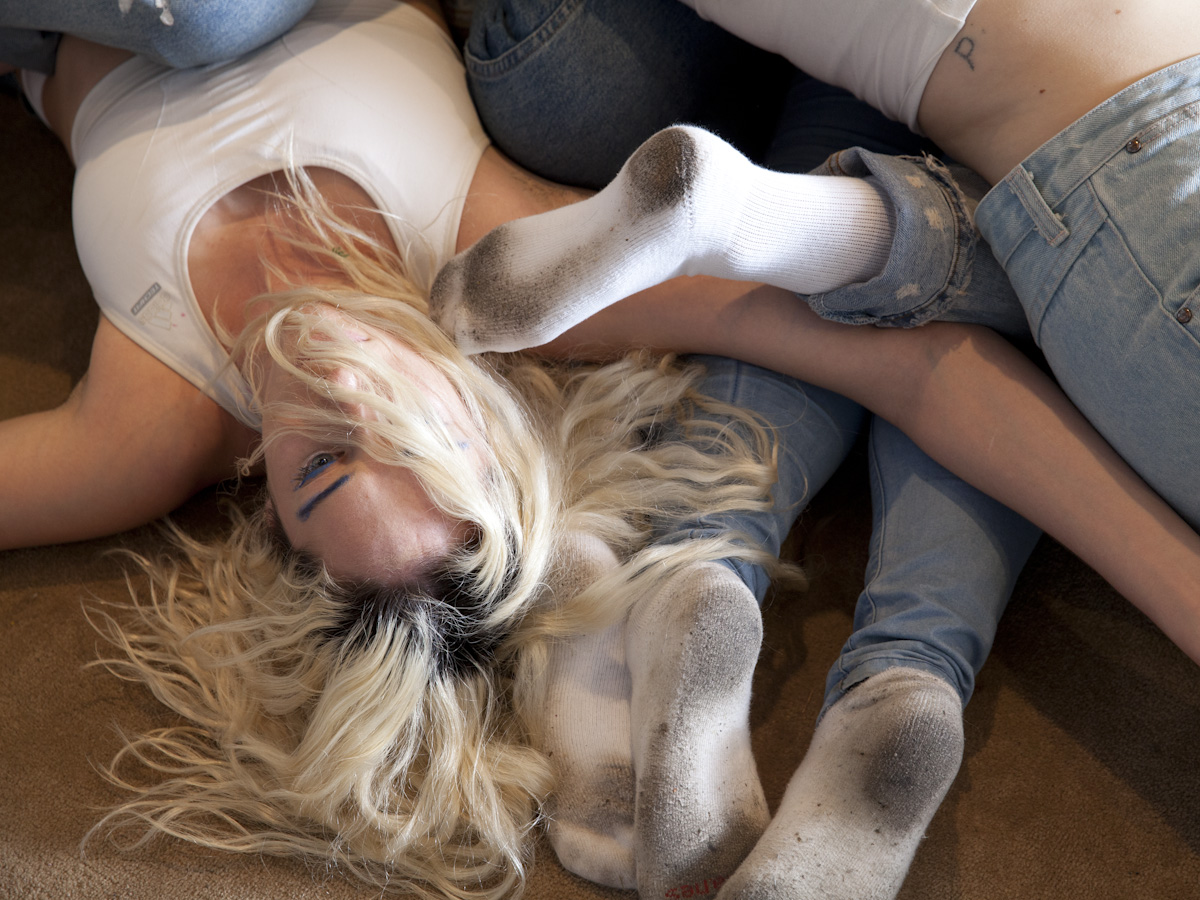
Tektology, coined by the Bolshevist philosopher Alexander Bogdanov in the 1920s, refers to a discipline holistically theorizing the way everything is organized, the principles that underly all the systems of relationships. FlucT makes me think of Tektology. Mirabile and Lauren are thinking about these intrinsic systemic relationships and want to inspire a seismic reorganization of them. There’s something about choreographing bodies that seems to get at this most fundamentally. Performance can become an arena where there is a brief reprieve from the way these systems choreograph how we relate to each other and to space every day.
It’s significant that the Model Home installation was hosted and produced by Secret Project Robot, a not-for-profit that embodies alternatives to the ways we usually organize space, labor, and capital. Founded by Eric Zajaceskowski and Rachel Nelson ten years ago, the institution produces live music, performance, and art shows marked by an inclusive and experimental spirit. People sometimes refer to venues like it as incubation spaces, but embedded in that word are expectations that many of these spaces exist, in part, to try to dismantle. Calling Secret Project Robot an incubation space operates on the assumption that this is a space where emerging artists can explore ideas that will eventually materialize as products that will have value in a marketplace. It’s a hierarchical and capitalistic organization of spaces for art-making and viewing that many have criticized, including artists Marie Karlberg and Lena Henke very pointedly with their project M/L Artspace, as well as 1 to 1 a few years before.
For Model Home, Secret Project Robot provided the building materials like lumber for the frame’s construction and Mirabile and Lauren got the rest of the furniture and fittings from Materials for the Arts, a city government program that sources unneeded materials and donates them to not-for-profit arts organizations. Of all the re-purposed furnishings, the kitchen’s futuristic pod-like dining set exuded most a sense of luxury. Sometimes the conditions we put up with come from a failure to imagine another way of organizing the world. And FlucT, with their home-building project and their reorientation of bodies in this temporary pop-up dollhouse, provoked you to imagine another way—even if it was restricted to the night of the performance or the month of the installation.
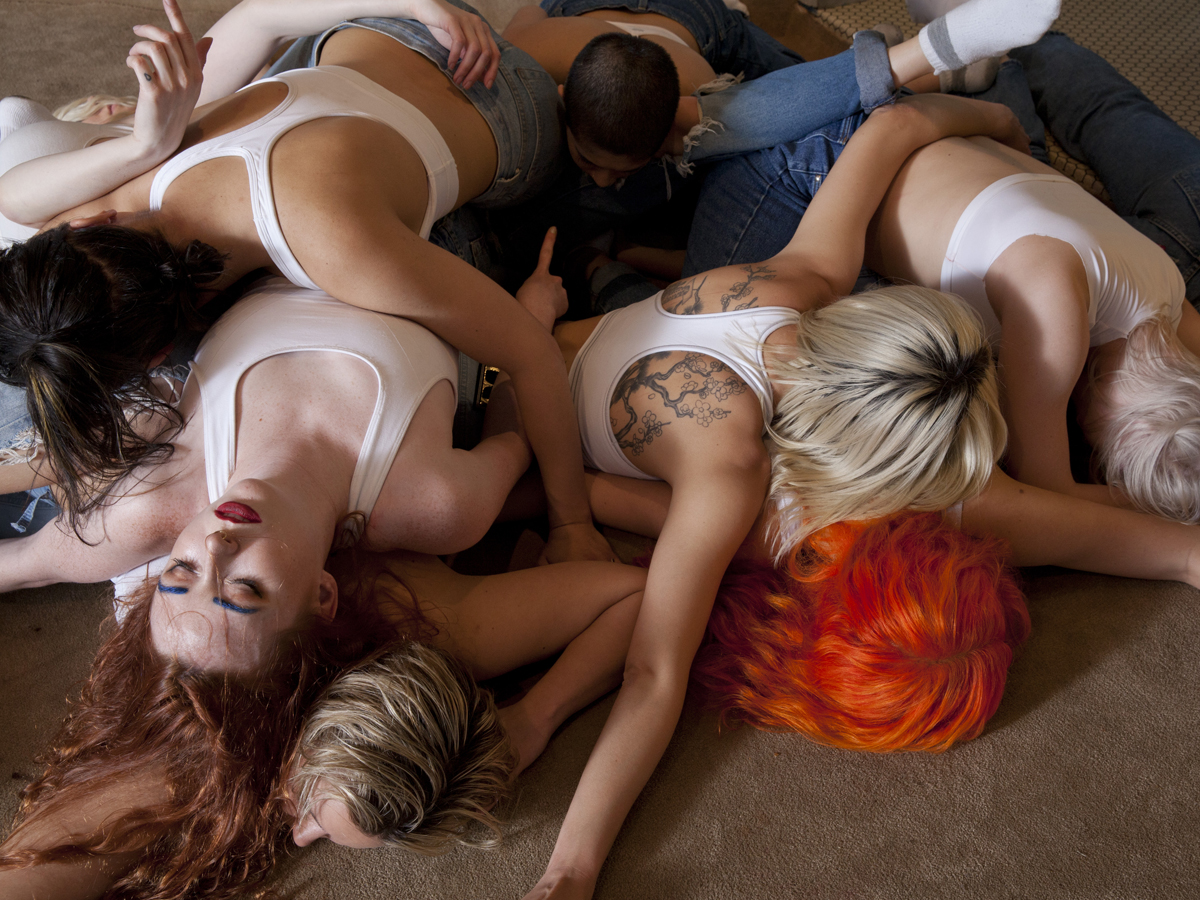
Whitney Mallett is a writer and filmmaker based in New York. She’s an editor at Topical Cream and her work has been published by The New York Times, ArtForum, Art in America, Nowness, ArteTV, and others.
